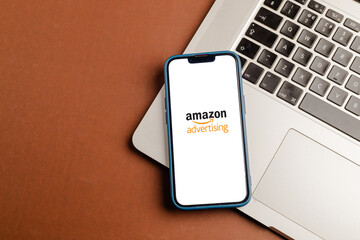Data shows that small sellers triple their ad spending compared to established brands.

Amazon’s marketplace is tougher than ever for small sellers.
Data shows small sellers spend 127% more on Sponsored Products ads, 146% more on Sponsored Video ads, and 34% more on Sponsored Brand ads than big brands, driving up costs as competition intensifies.
With rising ad expenses cutting into profits, sellers must rethink their strategies to stay ahead. Keep reading to learn how to lower your ad spend and improve your ROI.
Sellers Spend More on Amazon Advertising to Outperform Competitors
With 9.7 million sellers on Amazon and 3,700 more joining daily, competition is at an all-time high. Yet, only 17% of sellers actively advertise their products, leaving most struggling to gain visibility.
Advertising isn’t just an option anymore—it’s a necessity. Without strategic Amazon PPC campaigns, it’s nearly impossible to stand out in oversaturated niches, rank higher organically, and drive conversions.
Registered brands already leverage advanced advertising tools to boost ROI, while others risk falling behind. By investing in data-driven ad strategies and optimizing campaigns, sellers can claim their share of the market and secure sustainable growth.
To beat the competition and grow your Amazon small business, prioritize smart advertising. Smart advertising means gaining results while keeping costs low. Let’s look at how to achieve this.
Set a Minimum Spend Threshold
Add keywords as negative only after they’ve spent $30-$50 or received 20 clicks without producing valuable results. This ensures you’re not prematurely cutting off potentially profitable keywords.
Amazon PPC Budget Guide
Effectively allocate your Amazon PPC budget by understanding your advertising spend and sales goals. Focus on:
- Dedicate most of your budget to Sponsored Product campaigns while segmenting by Sponsored Brand and Sponsored Display.
- Prioritize manual campaigns (80% of budget) for better keyword control and ROI, leaving 20% for auto campaigns.
- Avoid high-cost, competitive keywords initially. Target hyper-relevant, long-tail keywords for better early results.
- Monitor performance by ASIN and campaign segmentation to shift budgets toward profitable campaigns.
Use Search Term Reports to Identify Waste
Regularly review your search term reports to spot keywords that are wasting ad spend. For example, terms that have high ACOS (Advertising Cost of Sale) or are irrelevant to your product can be flagged as negatives.
Amazon’s Search Query Report provides reliable insights into keyword performance, but here’s what to keep in mind:
- Use these metrics to guide keyword strategies for product launches.
- Prioritize high-value terms relevant to your brand.
- Insights are limited to the brand level, not individual ASINs.
Optimize the Main Image for Better CTR
Ad Badger, Amazon Advertising Stats (2024 Update)The average CTR on Amazon Advertising is 0.34%.
The main image is critical for attracting clicks and reducing ad costs when selling on Amazon.
Focus on bold, eye-catching elements like adding red magnets or other unique design features that differentiate the product. Use the largest, most relevant keyword in the image space to grab attention.
Regularly Adjust Bids
Review and lower bids twice a week to maintain control over ad spend while improving return on ad spend (ROAS). This ensures efficient budget utilization without significantly reducing visibility.
Adjusting Bids for Improved Ad Performance
To lower ACoS and optimize campaigns:
- Identify keywords with high spend and poor results, then disable or reduce bids.
- Gradually decrease bids on high ACoS keywords while maintaining acceptable performance levels.
- Filter by spending to spot wasteful phrases and negate them.
- Evaluate performance differences between similar keywords and refine targeting.
Use The Right Ad Type
To create a smart Amazon advertising strategy that keeps ad spend low, you’ll need to carefully choose which ad types to use based on your goals, product characteristics, and budget.
1. Sponsored Product Ads
Best For: Direct sales and specific product targeting
When to Use:
- If you’re launching a new product and need immediate visibility.
- When bidding for low-cost, relevant keywords with low competition, this will keep your ad spend low while still driving targeted traffic.
- Since it’s pay-per-click (PPC), you can control your costs by setting daily budgets and adjusting bids. Start with automatic targeting to let Amazon find relevant keywords for you.
- If you already have a high-converting product, Sponsored Product Ads can help amplify its visibility.
Best practices:
- Use negative keywords to avoid irrelevant clicks and wasted spend.
- Start with automatic targeting to gather data on which keywords are most cost-effective before switching to manual targeting.
- Test lower bids for less competitive keywords, especially those with high relevance to your products on Amazon.
2. Sponsored Brands
Best For: Brand awareness and promoting multiple products
When to Use:
- When you want to increase brand visibility, Sponsored Brands are ideal as they highlight your logo, tagline, and up to three products.
- If your brand has a variety of products, you can use this ad type to cross-promote.
- If you’re focused on creating an enduring presence on Amazon rather than immediate sales.
Best practices:
- Focus on highly specific, long-tail keywords with low competition to reduce the cost per click (CPC).
- Utilize custom landing pages to guide shoppers directly to a selection of your products, improving conversion rates and potentially reducing ad spend over time.
- Use A/B testing to experiment with different headlines and images to find the most cost-effective combinations.
3. Product Display Ads
Best For: Retargeting and targeting competitors’ audiences
When to Use:
- If you have a highly targeted audience (e.g., people who have viewed your product but not purchased), this is a great choice for re-engaging them.
- You can target shoppers who are viewing competitor products to try to steal their attention.
- Product Display Ads can often be cheaper than Sponsored Brands, making them a good choice for retargeting campaigns.
Best practices:
- Focus on competitor products, relevant categories, or shoppers who have already interacted with your product.
- Showing ads to people who have already purchased from you is often more cost-effective than acquiring new customers.
Know and Target Your Audience
American Marketing AssociationA target audience helps you focus and tailor your marketing to a group of highly interested individuals instead of trying to reach everyone.
1. Leverage Audience Insights
Use Amazon’s audience insights to gather data on shopper behavior, demographics, and purchase history. Build buyer personas to target specific, high-converting customers based on factors like age, buying habits, and price sensitivity.
2. Segment Audiences by Key Metrics
Target frequent buyers, such as those who regularly purchase consumables. Separate campaigns for high and low-average order value (AOV) customers.
Create seasonal campaigns like outdoor gear for summer hikers vs. winter sports enthusiasts.
3. Target and Bid Strategically
Use retargeting to reach interested customers. Aim ads at relevant product categories or brands.
Increase bids for high-conversion segments and decrease for less valuable ones.
4. Monitor and Optimize
A/B Test ad creatives and targeting to refine campaigns. Adjust or pause low-performing segments based on metrics like ACoS and CTR.
Optimize Keyword Usage
1. Target High-Intent Keywords
Review search term reports for high-converting keywords with low ACoS. Use tools like Amazon’s Keyword Planner or Helium 10 to find new high-intent keywords.
2. Leverage Long-Tail Keywords
Target specific, lower-competition long-tail keywords like “men’s lightweight running shoes for marathon.” These often lead to higher conversion rates due to their niche focus.
3. Group Irrelevant Keywords
Filter and group similar irrelevant terms together, then add them as negative keywords in bulk (e.g., “insulated tumblers,” “insulated wine tumbler”). This reduces wasted impressions and clicks.
4. Target Specific and Relevant Keywords
Keep track of profitable keywords while removing terms that don’t contribute to conversions.
Looking Ahead to 2025: Mastering Amazon Ads
As we move into 2025, selling on Amazon will remain challenging, especially with the introduction of Amazon Haul, which offers shoppers cheaper products. To navigate these challenges, sellers should focus on building a smart advertising strategy.
Collaborating with Amazon PPC specialists or an experienced Amazon Agency can help you optimize your campaigns and stay competitive. These professionals can guide you in mastering essential PPC levers, ensuring your ads reach the right audience and drive meaningful results.
The right strategy can make all the difference in a rapidly evolving marketplace.






